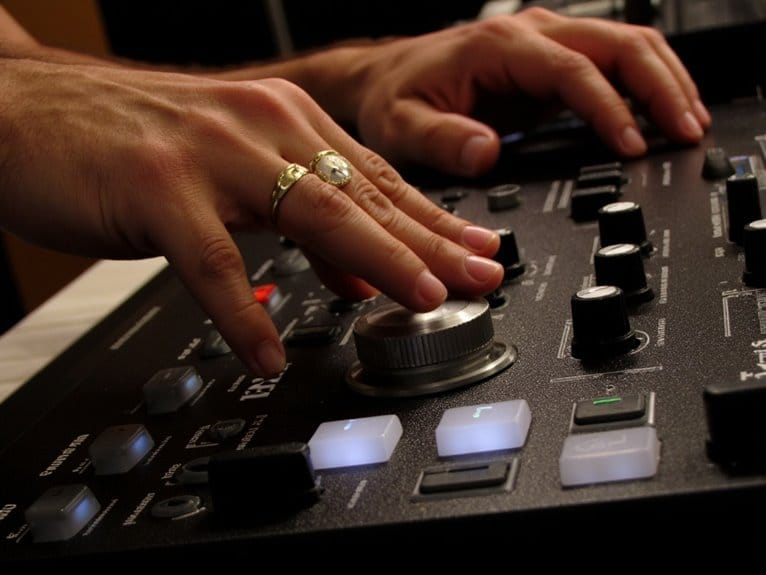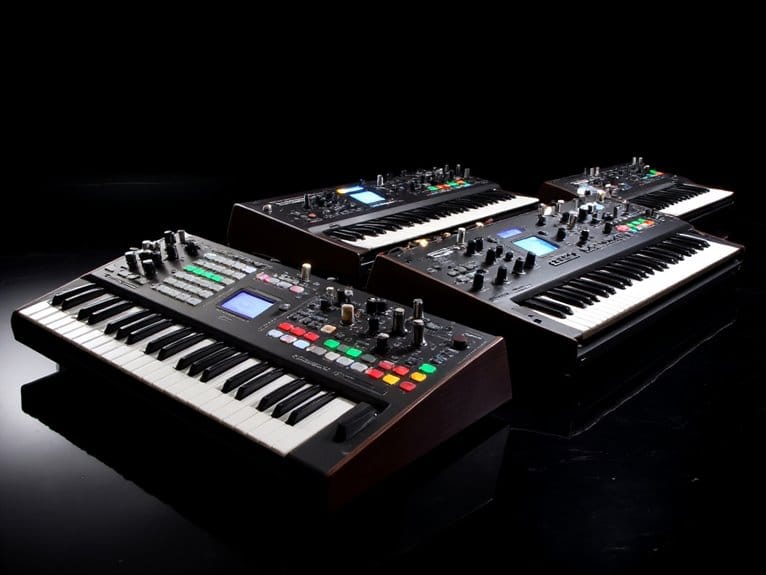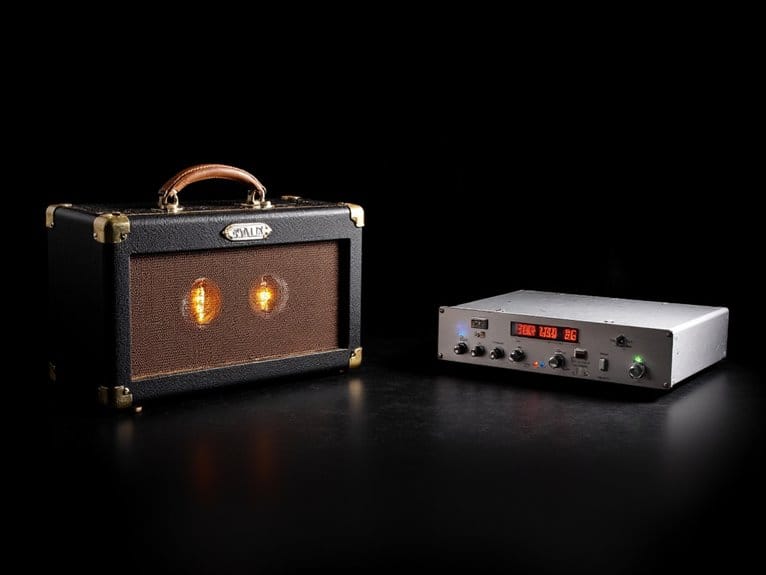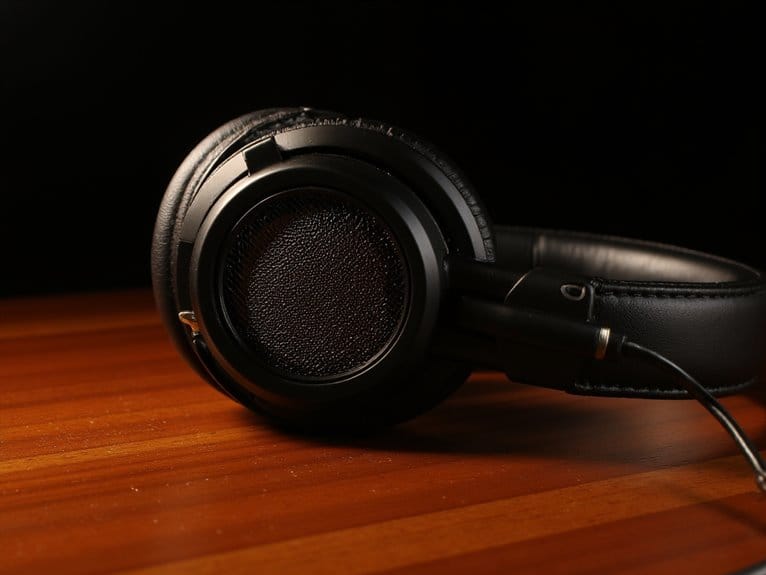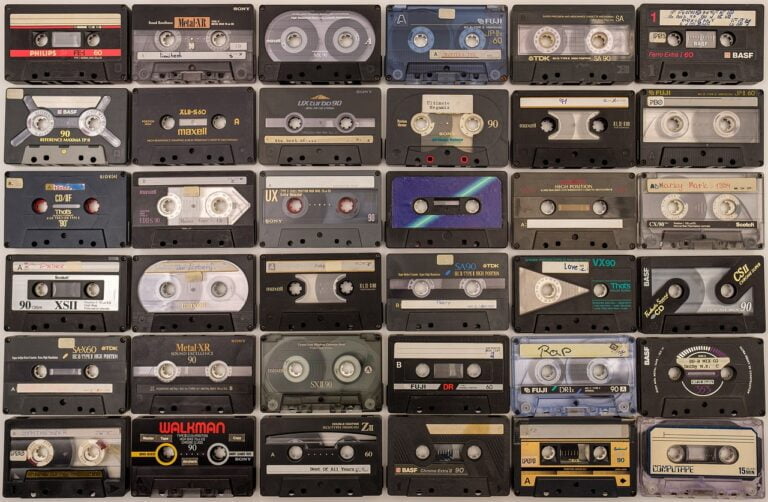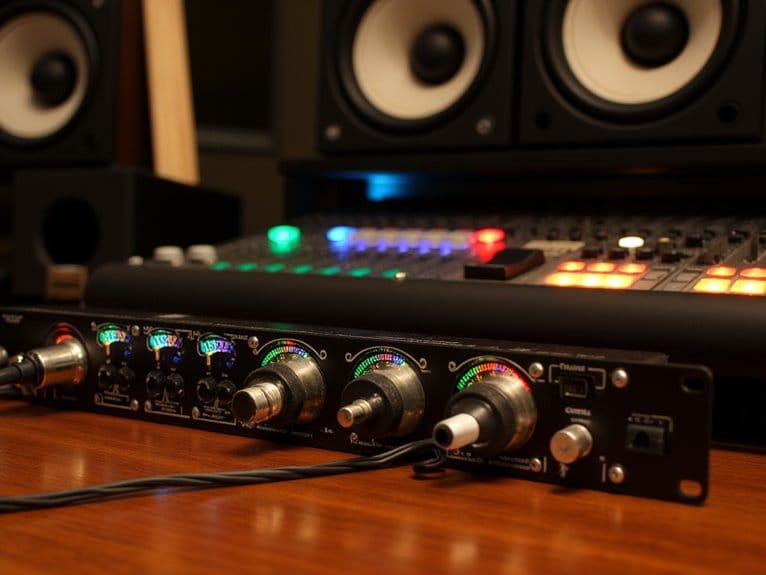What Is MIDI CC and How Controllers Use It
MIDI CC (Continuous Controller) messages are three-byte commands that let you manipulate synthesizer parameters in real-time using physical knobs, faders, and other hardware controls. When you turn a knob on your MIDI controller, it sends a status byte identifying the channel, a controller number specifying which parameter you’re targeting, and a value byte ranging from 0-127 for precise modulation. This creates the expressive bridge between your hands and digital sound engines, enabling dynamic filter sweeps, volume adjustments, and articulation changes that transform static sequences into living, breathing performances with the nuanced control that separates amateur productions from professional-grade results.
We are supported by our audience. When you purchase through links on our site, we may earn an affiliate commission, at no extra cost for you. Learn more.
Notable Insights
- MIDI CC (Control Change) messages use three bytes: status byte for channel, controller number for parameter, and value byte (0-127).
- Controllers send continuous MIDI CC data to modify parameters like volume, modulation, and filters in real-time during performance.
- MIDI CC enables physical hardware controllers to communicate with digital audio workstations for enhanced workflow and creative expression.
- Unlike Program Change or Note messages, MIDI CC provides continuous parameter adjustment rather than discrete on/off or preset switching.
- Common MIDI CC applications include real-time filter sweeps, LFO adjustments, volume dynamics, and expressive articulation control in music production.
Understanding MIDI Continuous Controller Messages
Most MIDI enthusiasts encounter Control Change messages without fully understanding their elegant simplicity, but I’ve found that grasping their structure reveals creative possibilities you didn’t know existed.
MIDI CC applications center on three essential components: a status byte identifying the channel, a controller number specifying which parameter you’re targeting, and a value byte ranging from 0 to 127 for precise parameter modulation.
This framework enables expressive control through real time manipulation of volume, modulation, panning, and countless other parameters.
I’ve discovered that understanding these automation techniques transforms static sequences into dynamic performances, where hardware integration with mod wheels, sliders, and knobs provides tactile controller customization. Unlike piano keyboards with rigid MIDI mappings, effect pedals offer manufacturers greater freedom in control assignments, leading to more diverse implementation possibilities.
The beauty lies in how this simple protocol facilitates sophisticated sound shaping and performance dynamics across your entire MIDI setup. Modern velocity-sensitive keys and programmable controls enable musicians to achieve natural expression while maintaining the precision that digital instruments demand. Just like how affordable audio interfaces provide professional capabilities for budget-conscious musicians, MIDI controllers deliver expressive performance tools without requiring expensive hardware investments. Each synthesizer typically includes a MIDI implementation chart that details specific CC number assignments for optimal control mapping. Advanced synthesizers feature assignable CC controls for parameter manipulation, allowing musicians to customize their performance interface according to their creative workflow.
The Evolution of MIDI CC Technology
While today’s seamless MIDI CC integration feels inevitable, I’ve traced its development back to a time when electronic musicians wrestled with incompatible control voltage systems and manufacturers who couldn’t agree on basic communication protocols.
The MIDI CC history reveals how Sequential Circuits, Roland, Yamaha, Korg, and Kawai collaborated to create universal standards that extended beyond basic note triggers.
Five major manufacturers set aside commercial rivalries to establish the universal control standards that transformed electronic music production forever.
Performance integration evolved through General MIDI in 1991, which standardized controller messages across devices, enabling consistent creative applications.
Controller enhancements continued with MIDI 2.0‘s introduction in 2020, delivering increased resolution and bidirectional communication. Technical implementation relies on 8-bit messages transmitted at standardized data rates, ensuring reliable communication between controllers and sound modules.
Future developments promise even tighter timing and richer expressive capabilities, transforming how you’ll manipulate timbre, effects, and mixing parameters during live performances and studio sessions.
Technical Architecture and Message Structure
When you’re working with MIDI controllers, understanding the technical architecture becomes essential because every knob turn, fader movement, and button press gets translated into specific digital messages that follow a precise three-byte structure.
Your controller sends these messages at exactly 31,250 baud using a format where the first byte identifies the message type and MIDI channel (ranging from 1-16), while the second byte specifies which controller you’re manipulating, and the third byte contains the actual value from 0 to 127.
I’ve found that grasping this fundamental message structure helps you troubleshoot connectivity issues, optimize your studio setup, and understand why some controllers respond differently than others when you’re crafting those perfect parameter changes.
MIDI Message Components
The foundation of MIDI communication rests on a surprisingly elegant binary structure that I’ve found remarkably consistent across decades of digital music evolution. Every message consists of a status byte followed by one or more data bytes that work together to convey musical information.
The midi message structure operates through this fundamental pattern, with the status byte significance determined by its highest bit being set to 1, while data bytes keep their highest bit at 0, limiting them to 7-bit values from 0-127. This design choice means you’ll see status bytes ranging from &80 to &FF hexadecimal, with channel voice messages occupying &80 to &EF, dedicating four bits each for channel assignment and message type identification.
Channel and Value Range
Sixteen distinct channels form the backbone of MIDI CC architecture, and I’ve consistently found this design choice brilliant in its simplicity, as each channel operates independently while sharing the same physical or virtual MIDI connection.
Your channel assignment determines which device receives specific messages, while device routing enables sophisticated multi-instrument setups. The 7-bit value range spans 0-127, creating control precision limitations that sometimes frustrate producers working with parameter mapping across wide dynamic ranges.
- Message transmission includes channel data in the status byte, directing CC values to intended destinations
- Value interpretation varies between devices, with some treating ranges as switches while others use continuous scaling
- Resolution challenges emerge when mapping 128 steps to complex parameters, requiring performance optimization through scaling algorithms
Data Transmission Protocol
Behind every MIDI CC message you’ll send lies a sophisticated data transmission protocol that I’ve spent countless hours debugging. Understanding its technical architecture can transform how you approach controller programming in your studio setup.
Each MIDI message follows precise data encoding rules, with status bytes identifying CC commands and data bytes carrying controller values. All managed through transport layer mechanisms like USB or traditional DIN connections.
The system employs a state machine for parsing incoming streams, optimizing transmission efficiency through running status techniques that skip redundant headers. Smart controller mapping considers message timing and performance impact, while streaming protocols handle data optimization automatically.
This architecture directly affects your real-time performance, making protocol knowledge essential for serious producers.
Common Applications in Music Production
While I’ve spent countless hours tweaking knobs and faders in my studio, I can confidently say that MIDI Continuous Controller messages represent the backbone of modern music production workflows, seamlessly bridging the gap between physical hardware controllers and digital audio workstations.
Your production toolkit expands dramatically when you harness CC messages for synthesizer modulation, enabling real-time filter sweeps and LFO adjustments that breathe life into static patches.
Effects automation becomes effortless as you map reverb sends, delay feedback, and chorus depth to physical controllers, creating dynamic soundscapes that evolve throughout your tracks.
• Volume dynamics through CC 7 provide smooth fader control for professional mixing precision
- Dynamic articulation using expression controllers adds realistic performance nuances to virtual instruments
- Real-time parameter manipulation transforms rigid MIDI sequences into expressive, humanized performances
- Dynamic articulation using expression controllers adds realistic performance nuances to virtual instruments
MIDI CC Vs Other MIDI Message Types
When you’re working with MIDI controllers, you’ll encounter several message types beyond CC, and understanding their differences helps you choose the right tool for each musical task.
Program Change messages work as discrete switches that jump between presets instantly, while CC messages provide smooth, continuous control over parameters like filter cutoff or reverb depth.
Note messages handle the basic on/off nature of key presses with velocity information, and Pitch Bend messages offer high-resolution continuous pitch control, but neither provides the versatile parameter automation that makes CC messages so essential for real-time performance tweaking.
Program Change Vs CC
Program Change and Control Change messages serve fundamentally different purposes in the MIDI ecosystem, and understanding their distinctions will help you choose the right approach for your specific musical needs.
Program change importance becomes evident when you’re switching between presets or patches on your instruments, sending a single program number from 0-127 to select specific sounds. Meanwhile, cc message flexibility shines during real-time performance, where you’ll adjust parameters like volume, modulation, or effects using controller numbers paired with values.
Key differences include:
- Function: PC messages switch presets instantly; CC messages provide continuous parameter control
- Structure: PC sends one program number; CC sends controller number plus adjustment value
- Usage: PC targets quick preset changes; CC enables expressive real-time manipulation during performance
Note Messages Vs CC
Understanding the fundamental differences between note messages and Control Change messages becomes essential once you dive deeper into MIDI programming, since these two message types handle completely different aspects of your musical performance.
Note messages trigger discrete musical events through Note On and Note Off commands, carrying key number and velocity data that determines which pitch plays and how loud it sounds.
Note message applications focus on starting and stopping sounds at specific moments, making them perfect for melodic and rhythmic content.
Meanwhile, CC message dynamics involve continuous parameter control, streaming values from 0-127 to modify effects, volume, pan, or modulation in real-time without triggering actual notes, which gives you expressive control over your sound’s character.
Pitch Bend Vs CC
While note messages and Control Change share the spotlight in most MIDI discussions, pitch bend messages operate in their own specialized territory, offering a fundamentally different approach to real-time expression that I’ve found essential for natural-sounding performances.
Unlike CC messages with their 7-bit resolution, pitch bend precision delivers 14-bit accuracy through dual data bytes, creating smoother shifts that feel genuinely continuous rather than stepped.
The cc message differences become apparent when you consider their distinct purposes and behaviors:
- Pitch bend applications focus exclusively on pitch modulation with spring-loaded controls that snap back to center
- CC expressive control handles multiple parameters simultaneously through various knobs, sliders, and pedals that maintain their last values
- Pitch bend affects all channel notes simultaneously, while CC messages can independently control volume, modulation, pan, and effects parameters
Hardware and Software Controllers for MIDI CC
When you’re diving into the world of MIDI control, you’ll quickly discover that both hardware and software controllers serve as the primary interfaces for sending MIDI Control Change messages to manipulate sound parameters in real-time.
Hardware controller types range from simple keyboards to sophisticated devices featuring knobs, faders, and assignable controls that enhance your expressive control methods. Meanwhile, software controller features include MIDI learn functions and automation capabilities that seamlessly integrate with your DAW, though DAW compatibility issues occasionally arise.
| Controller Type | Key Features | Best Use Cases |
|---|---|---|
| Hardware MIDI Keyboards | Physical keys, modwheel, sustain | Live performance integration |
| Software Virtual Controllers | Mouse/touch control, automation | Studio production workflows |
| Hybrid Control Surfaces | Motorized faders, LED feedback | Professional mixing environments |
| Custom Controllers | User-programmable controls | Specialized creative applications |
Many modern controllers include MIDI connectivity that allows integration with keyboards, synthesizers, and other electronic instruments for expanded creative possibilities. This hardware software synergy creates advanced controller capabilities, offering controller customization options that transform your creative workflow enhancements while maintaining excellent user experience comparisons across different setups. Professional producers often implement zero-latency monitoring to ensure real-time feedback when using MIDI controllers with complex routing setups. Professional setups often require audio interfaces to ensure high-quality signal conversion and minimal latency when connecting MIDI controllers to recording systems.
Frequently Asked Questions
Can MIDI CC Values Be Assigned to Multiple Parameters Simultaneously?
You can’t assign MIDI CC values to multiple parameters simultaneously with standard hardware. Most devices restrict multi parameter assignment, but specialized software tools and MIDI translators enable simultaneous control workarounds.
What Happens When Two Controllers Send Conflicting MIDI CC Messages?
When you’ve got message conflict from two controllers, controller priority determines which signal wins. Your DAW typically accepts the latest incoming message, overriding previous values, but this can cause unpredictable parameter jitter.
Are There Any MIDI CC Numbers Reserved for Specific Functions?
Yes, you’ll find reserved functions in MIDI implementation charts. Standard assignments include CC 1 for modulation, CC 7 for volume, and CC 64 for sustain. Controller mapping should respect these conventions for compatibility.
How Does MIDI CC Latency Affect Real-Time Performance?
MIDI CC latency affects real time performance by creating perceptible delays of 10-20ms that disrupt your timing and feel, especially when controlling parameters like mod wheels, making expressive playing less responsive and immediate.
Can MIDI CC Messages Be Recorded and Edited in DAWS?
You can record MIDI CC messages directly in most DAWs during performance sessions. After recording, you’ll access extensive MIDI editing tools and CC automation features to adjust curves, values, and timing for precise parameter control.
On a final note
You’ve now discovered how MIDI CC transforms your musical workflow, whether you’re tweaking virtual instrument parameters, automating DAW functions, or controlling hardware synthesizers in real-time. I’ve found that mastering these continuous controller messages opens up creative possibilities you didn’t know existed, making your performances more expressive and your productions more dynamic. Start experimenting with CC mapping today—you’ll wonder how you ever created music without it.

